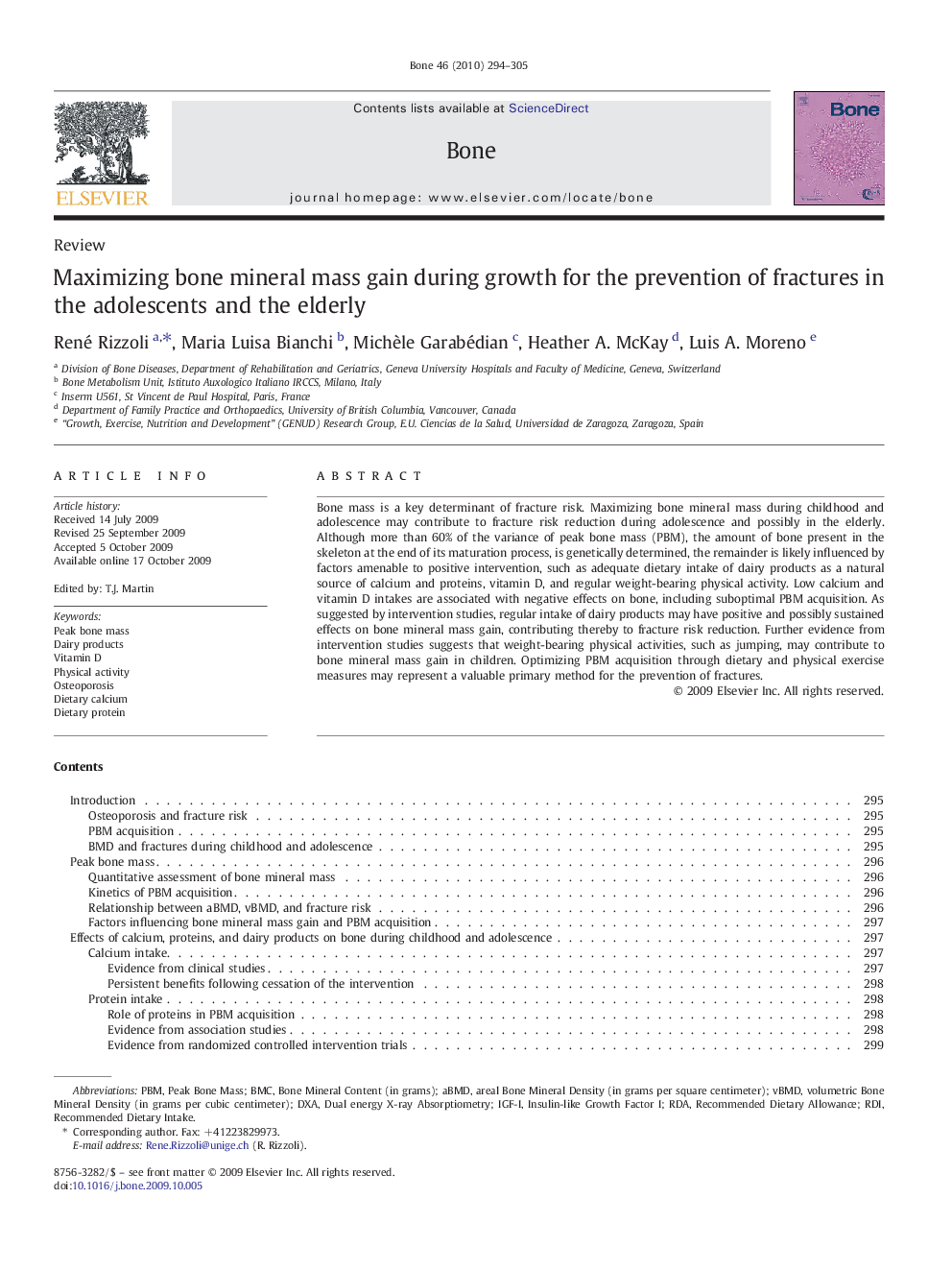| Article ID | Journal | Published Year | Pages | File Type |
|---|---|---|---|---|
| 5892437 | Bone | 2010 | 12 Pages |
Abstract
Bone mass is a key determinant of fracture risk. Maximizing bone mineral mass during childhood and adolescence may contribute to fracture risk reduction during adolescence and possibly in the elderly. Although more than 60% of the variance of peak bone mass (PBM), the amount of bone present in the skeleton at the end of its maturation process, is genetically determined, the remainder is likely influenced by factors amenable to positive intervention, such as adequate dietary intake of dairy products as a natural source of calcium and proteins, vitamin D, and regular weight-bearing physical activity. Low calcium and vitamin D intakes are associated with negative effects on bone, including suboptimal PBM acquisition. As suggested by intervention studies, regular intake of dairy products may have positive and possibly sustained effects on bone mineral mass gain, contributing thereby to fracture risk reduction. Further evidence from intervention studies suggests that weight-bearing physical activities, such as jumping, may contribute to bone mineral mass gain in children. Optimizing PBM acquisition through dietary and physical exercise measures may represent a valuable primary method for the prevention of fractures.
Keywords
Related Topics
Life Sciences
Biochemistry, Genetics and Molecular Biology
Developmental Biology
Authors
René Rizzoli, Maria Luisa Bianchi, Michèle Garabédian, Heather A. McKay, Luis A. Moreno,
